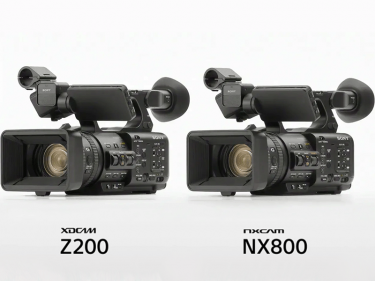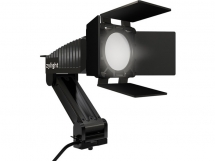| Українська | English | |||||||||||
|
|||||||||||
| News | About company | Service-centre | OB Van/SNG Rental | NextGen Energy Solutions | Contact us |
|
|
Engineering Service, Inc.
» News News Sony announced its new PXW-Z200 and HXR-NX800 handheld camcorders. They feature AI-powered Subject Recognition AF, a new 24mm to 480mm power zoom lens, 4K 120p, built-in Wi-Fi, S-Cinetone, and 709tone support.
PXW-Z200 The PXW-Z200 allows you to shoot, record and stream in 4K HDR, with a 20x optical zoom, AI-powered Subject Recognition AF, integrated 2.4 GHz / 5 GHz Wi-Fi, and 12G-SDI connectivity. The Z200 features an approx. 14.0 megapixel (effective) 1.0-type Exmor RS CMOS image sensor. Its stacked structure with back-illuminated pixels layered over integrated signal processing circuits enables both faster read-out speeds and what Sony claims is superior low-light performance due to more light reaching the sensor. The camera can do 5K oversampling with full-pixel readout so you can record 4K (3840 x 2160) 60p video. The 1.0-type Exmor RS stacked CMOS sensor is also claimed to deliver images with high sensitivity and low noise, at up to 120fps (with approx. 23% crop) in 4K, and 240fps in FHD. The camera has full-pixel readout and real-time BIONZ XR image processing, as well as being able to use 709tone and S-Cinetone making color matching to Cinema Line and Sony system cameras easy. The Z200 offers a variety of recording formats to suit your individual project requirements. XAVC (MXF) (support planned for June 2025 or later) provides enhanced compatibility for MXF-based broadcast TV workflows. XAVC S-I offers highest quality 10-bit 4:2:2 recording for 4K (QFHD) using post-production friendly Intra-Frame H.264. XAVC HS-L (H.265) and XAVC S-L (H.264) offer a choice of 4:2:2 or 4:2:0 with Long GOP recording for extended recording times and file-saving efficiency. XAVC HS Proxy recording of up to 16 Mbps can be recorded simultaneously with higher bit rate formats, and these smaller proxy files can then be used for editing and previewing prior to final production delivery. According to Sony, their AI Processing Unit can recognize human subjects, while the Fast Hybrid AF system tracks your subject and can maintain precise focus at all times. The camera also features an Electronic Variable ND Filter and there is an Auto ND function that will automatically set optimal exposure for you. You can use the built-in 2.4 GHz and 5 GHz Wi-Fi in conjunction with Sony’s C3 Portal (paid) or XDCAM Pocket apps to do high-quality streaming direct from the camera. Remote operation is also possible via the Monitor & Control app that allows you to check angles and monitor shooting from your smartphone or tablet. The Z200 also offers built-in 12G-SDI with four-times the bandwidth of 3G-SDI over a single cable, TC input / output and broadcast friendly XAVC (MXF) (support planned for June 2025 or later). The Z200’s Auto Trace White Balance (ATW) control has evolved alongside the BIONZ XR and AI capabilities. The camera’s AI Processing Unit enables more precise ATW control, even in challenging lighting conditions, such as when the targeted person is in shadow. Auto Framing With Auto Framing engaged the camera will automatically track a recognized human subject and adjust framing so that the subject is always prominently positioned in the frame. This is claimed to allow solo operators to concentrate on engaging with an interviewee without constantly checking on camera positioning. The 20x power zoom G Len covers everything from wide angle in-car interviews to telephoto close-ups for sports. Delivering an optical zoom range of 24-480 mm (35 mm full-frame equivalent), it’s backed up by Sony’s Clear Image Zoom technology, which adds the ability to achieve 30x zoom when recording 4K or 40x zoom in FHD. And you can explore maximum apertures of F2.8 (wide) and F4.5 (telephoto) while zooming quickly, smoothly and silently. Advanced image stabilization Users can minimize the effects of camera shake with built-in image stabilization. Make sure of smooth, stable footage in Active Mode image stabilization (Slight image crop in Active Mode. Active Mode is not available when recording at frame rates of 120 (100) fps or higher, including S&Q), where optical and electronic stabilization work together to make handheld shots better. LCD & VF The new 3.5-type LCD monitor offers approximately 27.6 million dots. The monitor swings up and down as well as backward. The supplied LCD hood is easily installed by sliding it into the grooves in the top and bottom of the LCD monitor, while the monitor can be folded away for storage even with the hood installed. For clear, undistracted viewing, the high-contrast 0.39-type OLED viewfinder shuts out extraneous light while offering approximately 23.6 million dots. Size & Weight The Z200 (main body only) weighs approximately 1.96 kg and measures 175.6 mm x 201.3 mm x 371.1 mm (WxHxD), but for storage these dimensions fall to 175.6 mm x 175.4 mm x 285.1 mm (WxHxD). The microphone holder can be detached from the camera for even greater portability. Camera control The Z200 is designed with the flexibility to operate according to your individual preferences and workflow demands. Two independent control rings for focus/zoom (Iris control will be assignable to a control ring in June 2025 or later) and two dials for IRIS/ND Variable are located side by side, allowing for effortless control of exposure along with focus and zoom. The Z200 also has 12 user-assignable buttons (ASSIGN 1-11 and FOCUS PUSH AUTO button) that you can set to control almost any camera feature. 4-channel audio You can record up to four channels of audio by combining inputs via XLR connectors and the Multi Interface (MI) Shoe. Adjust levels for two of the channels using audio level dials, without accessing device menus. Other Features Dual memory card slots: Record on two cards simultaneously or use relay recording to back-up your content. Dual memory card slots support both CFexpress Type A and SD memory cards. Dependable battery power: BP-U35 AND BP-U100 Sony batteries. Quickly charge BP-U35, BP-U70 or BP-U100 lithium-ion batteries using the BC-U1A or BC-U2A charger (batteries and charger sold separately). Continuous operating time with a BP-U35 battery is approximately 90 minutes. Swap batteries between other Sony cameras, including the PXW-Z280 and PXW-Z190 camcorders, as well as the FX9 and FX6 Cinema Line cameras. HXR-NX800 The HXR-NX800 is very similar to the PXW-Z200. It features the same exact sensor and it can also capture 4K at up to 120p and FHD up to 240p. It also has most of the same features and functionality. The biggest difference is when it comes to recording capabilities. For highest quality, XAVC S-I with 10-bit 4:2:2 4K (QFHD) recording uses post-production friendly Intra-Frame H.264. XAVC HS-L (H.265) and XAVC S-L (H.264) offer a choice of 4:2:2 or 4:2:0 with Long GOP recording for extended recording times and file-saving efficiency. XAVC HS Proxy recording of up to 16 Mbps can be recorded simultaneously with higher bit rate formats, and these smaller proxy files can then be used for editing and previewing prior to final production delivery. The HXR-NX800 doesn’t have SDI like the PXW-Z200. It only has a full sized HDMI output and a SuperSpeed USB 5 Gbps (USB 3.2 compatible). The NX800 (main body only) weighs just approximately 1.93 kg and measures 175.6 mm x 201.3 mm x 371.1 mm (WxHxD), but for storage these dimensions fall to 175.6 mm x 175.4 mm x 285.1 mm (WxHxD) without the lens hood, the microphone holder and the large eyecup.. The microphone holder can be detached from the camera for even greater portability. « To the list of news |
|
|||||||||||||||||
 |
+38 (044) 593-18-20 +38 (073) 593-18-20 +38 (096) 532-96-82 +38 (095) 532-96-82 Service center Telegram @Engineer_Service |

|
|
|||||
 |
e-mail: engineer-service.tv 15 Vavylovykh str., Kiev, 04060, Ukraine Authorized service centre of Panasonic, Sony, JVC, Fujinon, Canon |
|||||||








